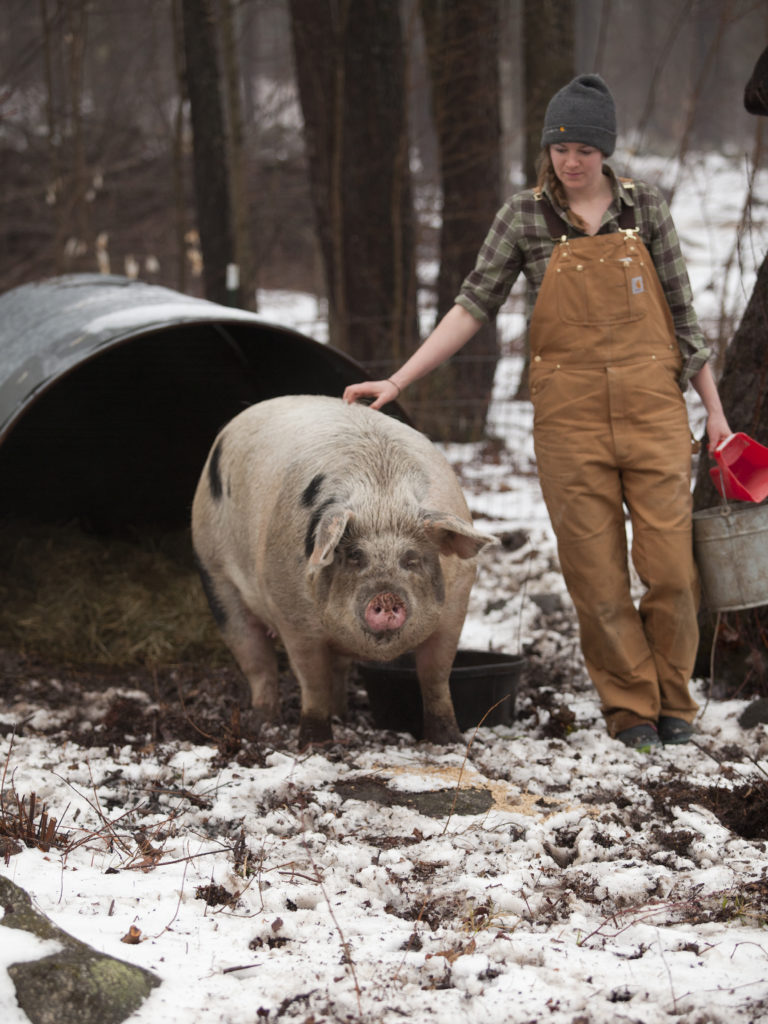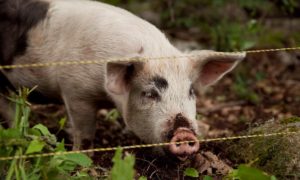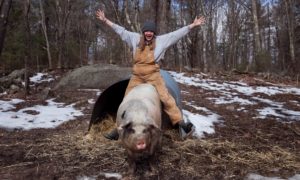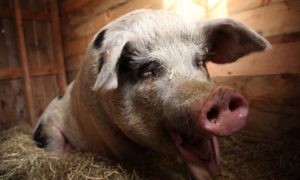Our desire to keep our own sow for breeding piglets stemmed from our frustration trying to get quality piglets. Spring is the ideal time to get piglets for most, so they sell out quickly and our expectations are admittedly high. Keeping a sow of our own would allow us to have control over the breed mix and experiment with crosses, save the hectic spring scramble, and on the cost of buying piglets. Maybe, we could even make a little money on the side selling extra piglets!
When we first started scouring Craiglist for a gilt or sow, I admittedly at the time didn’t know a thing about what to look for. I had no pig mentor, and the internet leaves a lot to be desired in terms of information. So I figured I would just kind of trust common sense and go with it. I knew to check that she moved soundly, had nice feet squarely under her body, and that her vulva didn’t appear scarred or damaged, but that was it.
When we went to look at Big Marie, I was flabbergasted and literally taken aback by her size. I didn’t necessarily think she was overweight, because she is quite literally huge in stature. The people said that she was a year old and had never been bred, but had been in with a boar so she could potentially be pregnant.
There was nothing that screamed “don’t get her” to us, so we loaded her up on the trailer and brought her home hoping that we may have some piglets on the way if she was already pregnant. It turned out that she wasn’t, and five months later I artificially inseminated her. I learned that not only was she in fact overweight (and not just big) but also considered “old” to be getting bred for the first time. Despite these challenges that I didn’t even know were an issue, I decided to move ahead with breeding her and attempt to overcome the obstacles.

Before getting Big Marie, I knew that a gilt had to be at least 300 pounds and cycled a few times before being bred for the first time. I did not know however, how critical of a factor age is, and that ideally a year old is the maximum age for being bred for the first time. Seems young, am I right? Big Marie, was 18 months old when I went to breed her, six months past the ideal maximum age! Basically, having gone through many heat cycles with never being bred, she was at risk for developing (or already developed) follicular cysts. This leads to infertility, aka the inability to be bred. We obviously can’t “work through this problem” unless we somehow come up with a way to turn back time. So, the only thing I could do to address this was to try and get her bred immediately before she got any older!
Because I had no control over her age, the main issue that I had to address first and foremost was her weight. It’s so easy for a pig to get overweight, and unfortunately we didn’t know exactly what we were looking at when we got her as she came to use overweight. Fat sows/gilts have difficulty getting bred, and are at an extremely high risk for difficulties farrowing including stillbirths and breached babies. In an ideal world, I would put her on a strict diet to cut her weight down before breeding her. We were however, up against the age issue and time was not a luxury that we had.
The only option we really had at this point was to put her on a crash diet to get her to start cutting weight fast. I cut her daily food intake in half, and she got only 3 pounds of 14% protein feed a day with zero scraps. She quickly trimmed down early in her pregnancy, so I slowly increased her feed throughout her gestation to provide the necessary nutrition for her and her growing litter.
The whole breeding pigs experience certainly was a crash course before I even got the chance to inseminate her. I am just thankful that all of my efforts weren’t in vain, and I was able to successfully inseminate her and she didn’t have any major complications in her farrowing.
If at the time I went to look at Big Marie I knew more about pigs, there is a good chance I would have never taken her home that day. She was fat, “old”, and her underline is not ideal. Sometimes when you have the “learn on the fly” mentality, you end up getting burned and make some pretty big mistakes. But, hindsight is 20/20, and the homesteading journey is all about challenges, learning from your mistakes, and overcoming them. Thankfully I didn’t get burned in the sense I am left with a 1,000 pound infertile pig that I became attached to. Big Marie did get pregnant, we had a pretty good overall farrowing experience (not without its challenges), and ended up being a fantastic mother. But, through this experience I have learned what to look for in the future and am wiser because of it.



Pingback: Preparing Big Marie for Her First Farrowing – The Modern Day Settler
Pingback: How to Choose a Gilt for Breeding - The Modern Day Settler